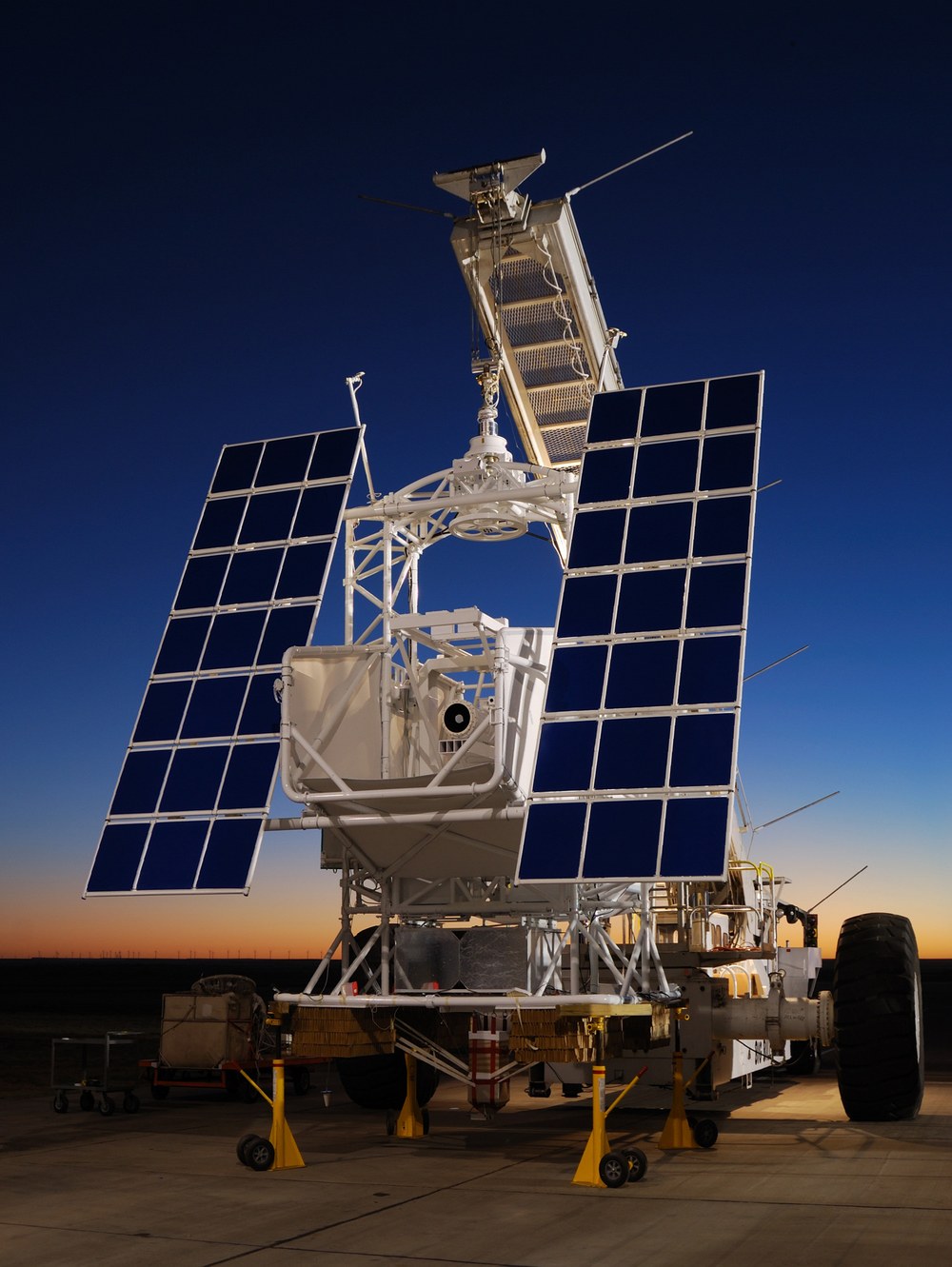Sunrise

Mission: June 08 - 14, 2009
Although these changes may appear minor, they do influence the weather and the climate on earth. The part of the solar radiation that is invisible to human eyes may even fluctuate considerably on occasion, impairing, for example, the function of unprotected telecommunications satellites. This is why there is great scientific interest in understanding the nature and dynamics of the processes occurring on the sun.
In June 2009, therefore, the Sunrise mission to observe the solar atmosphere was launched from the Esrange Space Center near Kiruna in the north of Sweden. The period of the midnight sun was chosen to ensure that the telescope could operate for several days without interruption. A balloon carried the Sunrise telescope up to an altitude between 35 and 37 kilometers. Here observations of the solar ultraviolet spectrum become possible, given that UV radiation is attenuated excessively by water vapor in the lower atmosphere and by the ozone layer.

During its subsequent westward trip along the north polar circle, the Sunrise telescope observed the atmosphere of the sun at a resolution high enough to identify the dynamics of the granular surface structures. The upward and downward movements of hot gas plasma on the surface resemble the movements of water boiling in a pot, although the physical forces that power them, such as magnetic fields, are not very well understood.
All scientific instruments of the Sunrise telescope operated flawlessly and accomplished spectroscopic and polarimetric measurements from which information about motion velocities of the hot gas and local magnetic fields may be derived. With its mirror, which measures one meter in diameter, the Sunrise telescope was able to dissolve objects of the size of 35 kilometers on the solar surface.
Furthermore, Sunrise also provides the scientific and technological basis for future solar space flight missions like the "Solar Orbiter" mission, which is planned to be launched in 2017.
The mission lasted for five and a half days during which the balloon drifted with the circumpolar easterly wind across the North Atlantic to Canada. There, the gondola was separated from the balloon via a radio command and within one hour the Sunrise telescope descended to the ground with a parachute. After the safe recovery, the payload may be reused in future missions.
Mission parameters
Mission Launch: | June 08, 2009, 08:27 a.m. CEST |
Launch Site: | Esrange, Kiruna, Sweden |
Mission Duration: | 137 hours |
Flight Altitude: | 35 to 37 kilometers |
Flight Route: | Across the North Atlantic to Canada |
Landing time: | June 14, 2009, 01:44 a.m. CEST |
Landing place: | Somerset Island, North Canada |
The project was supported by the DLR Space Agency with funds from the Federal Ministry for Economics and Technology (BMWi). It was managed by the Max Planck Institute for Solar System Research (MPS) in Katlenburg-Lindau (Project manager: P. Barthol). The Kiepenheuer Institute for Solar Physics (KIS) in Freiburg was involved as well. International partners were the High Altitude Observatory in Boulder (USA), the Instituto de Astrofisica de Canarias (IAC) on Tenerife and the Lockheed Martin Solar & Astrophysics Laboratory in Palo Alto (USA).


